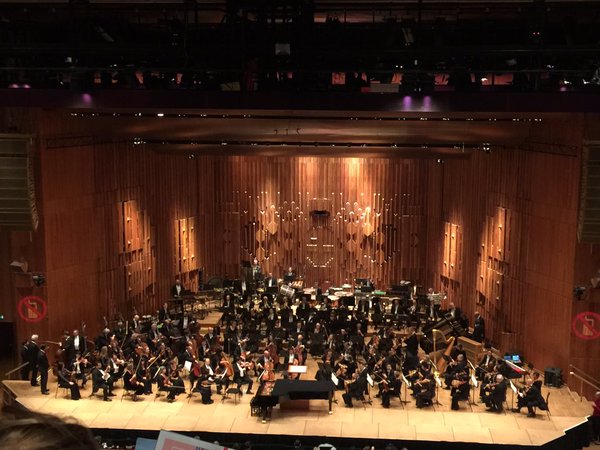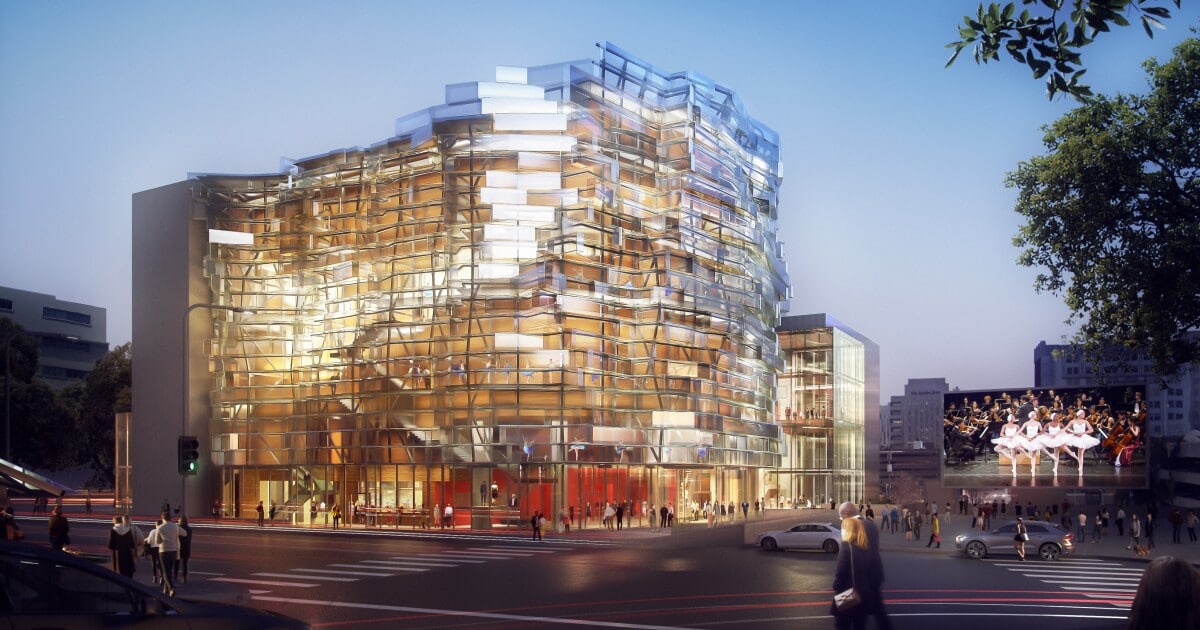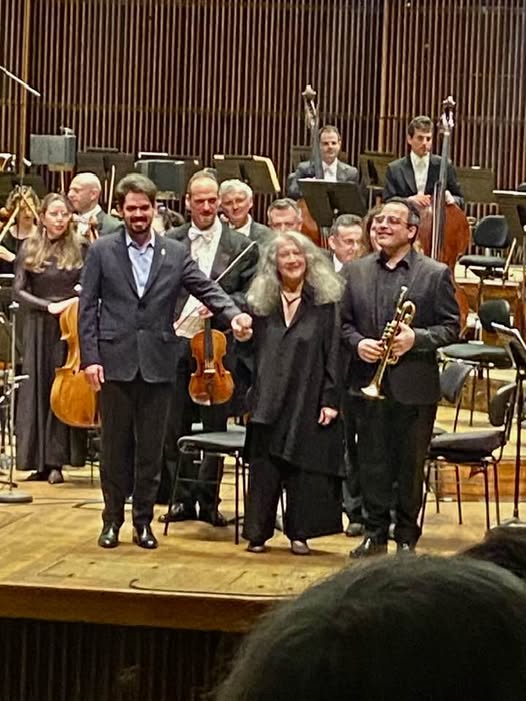London’s Barbican gets £191 million – and still needs more
NewsThe City of London has voted to spend £191m on renewing the Barbican arts centre, having abandoned plans to build a new concerthall elsewhere within its boundaries.
But £191m is just 80 percent of what is needed for the first phase of works on the 42 year-old centre. The rest will have to be raised from donors. They will start knocking on doors in 2025, for works to begin in 2027.
Chris Hayward, City Corporation policy chairman, said: ‘The Barbican Centre is a fantastic international venue with an exciting future.’ One could challenge almost every word in that sentence.
The Barbie has been, from drawingboard until now, a bottomless pit with few redeeming features.
It’s no pleasure to go there and a relief to get out. The London Symphony Orchestra are stuck there forever.






Other than being a crap ugly hall in a terrible location, he was spot on.
The Barbican is like this ugly hotel close to London Tower bridge, the Tower Hotel.
Ugly-ass brutalist design typical of the ’70s and ’80s. Looks like something out of “A Clockwork Orange”.
I’am not an inhabitant of London I wonder if it would be clever to buid something bigger and new on the place of the Royal Festival Hall or to make it bigger…. Maybe it’s impossible… But the Royal Festival Hall is a better place with the spirite of Bernard Haitink.
And sounds awful.
Why so much negativity… How have you managed to turn this into a bad thing? This article should read London’s “Breaking: Barbican gets the £191m it deserves!” Barbican is a huge complex, an architectural and cultural icon. Buildings need maintenance, maintenance costs money. New halls are boring… Stop hating on the Barbican and keep the cash coming.
Turn it into flats.
Have you ever been there? There already are flats. Lots of them.
London is a template – architecturally, financially, culturally – for what a lot of cities in the world should be like. Yet when it comes to thing like this or the Royal Festival Hall, it ain’t no (using an old-time measuring scale) Boston, Vienna or Amsterdam.
Even though NYC has Symphony/Avery Fisher/Geffen Hall, it also has Carnegie, sort of middling acoustically, but a historic wunderkind.
Carnegie is certainly not “middling” acoustically, it is very good though not as good as Boston. It’s better than anything in London. Geffen Hall remains wretched but better than before. The RFH was built in 1950 and was very advanced for its time. However it was dry as a bone with little bass. Stokowski walked in when conducting the RPO on a UK tour and immediately said “what a pity “. Acoustic resonators have helped a bit in more recent times.
My wife and I are Americans who have visited Britain many times, but attended our first-ever performance at the Barbican in September (the latest revival of Cole Porter’s “Kiss Me, Kate”).
The performance was wonderful. The venue, and the whole area around it were utterly dispiriting, as if the designers asked, “How can we make this section of London as brutal and hard-edged and charmless as possible?”
This is, of course, by no means unique to the Barbican. Brutalism, and much other “modern” architecture, has been a curse to inviting and human-scaled cityscapes everywhere.
By sheer chance, before curtain time we drifted into conversation with a nearby audience member who said he was an architect. He asked what we thought of the Barbican, and we answered truthfully, adding that we hoped we weren’t offending him. He said, not at all, he agreed with us. I mentioned that, as nonresidents unfamiliar with the detailed architectural histories of individual UK towns and areas within them, we often don’t know which such UK urban areas were demolished and rebuilt with intent, and which represented insensitive postwar reconstruction of areas bombed by Germany. He laughed ruefully and said, “No, where the Barbican is concerned, London bombed itSELF and put this thing where there was once a neighborhood.”
I love the Barbican. I don’t know why everyone knocks it. It symbolizes so much good – I just love it.
It definately needs investment. It’s just like Starbucks front of house (people on laptops not talking and grotty toilets) and a student bar backstage. (Mice, dirty, dim lights, slightly odd smell)
I often wonder why it was that at the time the Barbican was conceived and built, little consideration was being given to both interiors and exteriors. Around that time varous major concert venues were being built and opened in Asia with excellent acoustics and more sudience friendly facilities. In virtually the same year as the Barbican, Osaka Symphony Hall opened, allegedly said by many to be one of Herbert von Karajan’s favourite concert halls. Tokyo’s Suntory Hall, Taipei’s excellent National Concert Hall, Seoul’s Arts Centre Concert Hall and only a few years later with equally fine halls in Kuala Lumpur, Singapore and several more in Japan and South Korea to follow. The one dud is Hong Kong’s 1989 Cultural Centre Concert Hall, but then that was designed by the territory’s Chief Government architect who allegedly had never been in a concert hall and who brought in specialist international consultants far too late to make changes!
I think the hall in “perfectly adaquate”. Not great, a bit ugly, but not terrible either.
I like the Barbican. I was there last night (13th December) and as far as I can tell it worked fine. I accept the architecture is an acquired taste but how does that ruin the concert? As a City worker its location is good for me although it might not be immediately convenient from South West London.
But they keep refurbishing the Barbican Centre, moving things about, changing floor numbers, coating above stage reflectors with sticky-back plastic/metal sheet (complete with the bubbles that pop up when I do it), blocking off the stage entrance doors with risers, all to little avail. The auditoriums’ redeeming feature is the comfort of the seats, wide enough aisles to pass through and good sightlines from almost anywhere. The concert hall acoustic is ok, slightly random but unsuitable for any large-scale work – the sound has nowhere to expand and ‘hang’ in and just blasts and blares. Some Mahler performances I’ve heard there have been strident and tiring, almost painful to listen to at climaxes. Meanwhile much of the complex has cracked and broken brick paths, leaky, disfigured and crumbling mortar.
They spend a similarly huge amount revamping the Royal Festival Hall again to little effect – the acoustic is still poor and most foyer space occupied by the free wifi parasites and baby/toddler groups. Arriving for a concert, there’s nowhere to sit and eat. There is though a nice selection of high street chain restaurants surrounding the complex, the franchises for which paid for the refurb.
Neither hall can be turned into an idea one and London’s and visiting orchestras poorly served compared to other major European cities.
A new hall, built using the best of 21st century technology, should have been built years ago. Admittedly the various plans that have been put forward were flawed. However, the desire to carp about everything, describe every UK project as a “white elephant”, and see elitism wherever possible, is one of the reasons we have this “make do and mend” approach. This ends up being extremely expensive but the cost attracts less negative attention that a new build would.
Nothing will change until we have leaders who have the inclination and the confidence to stand up and say that a good concert hall actually matters.
£1 million a year would pay for or subsidise 500 people per concert to get on a train at Euston taking 90 minutes to a Symphony Hall that has a far better acoustic than the Barbican or RFH, especially for Mahler, Bruckner and the like but also sounds sweet and precise for Mozart.